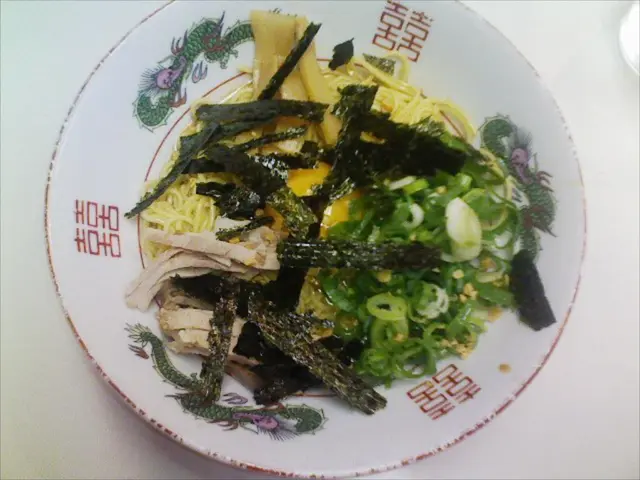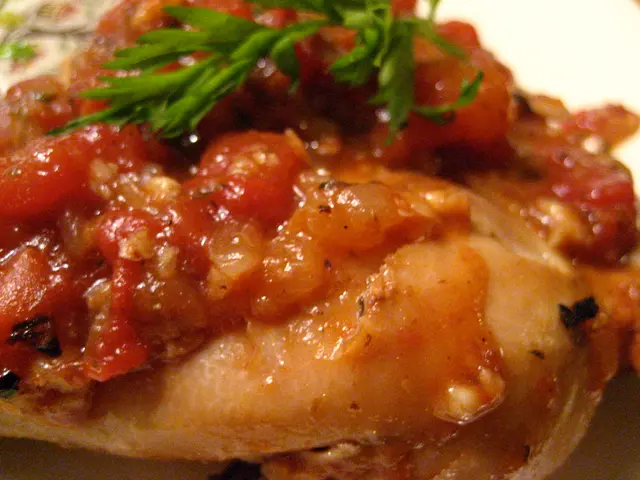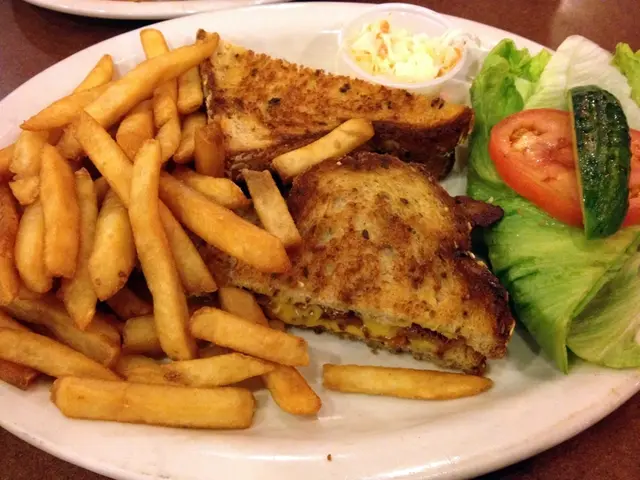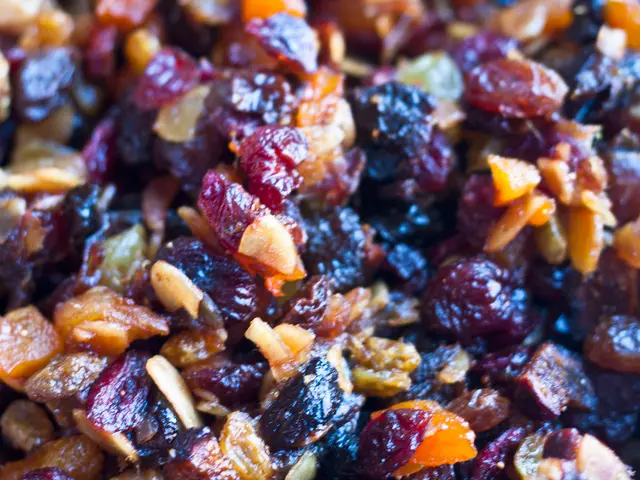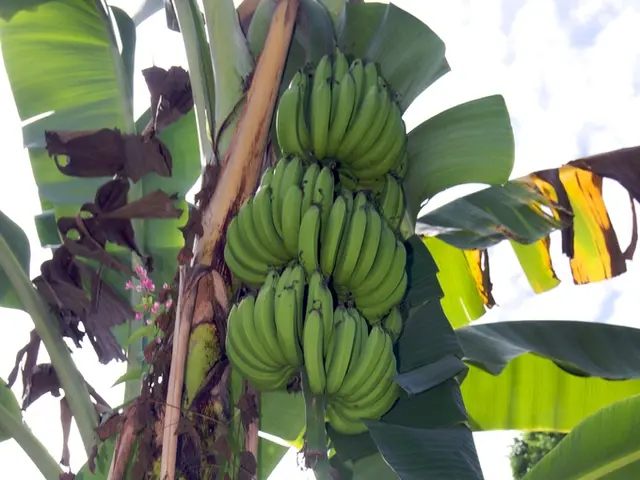Comparing Balsamic and White Vinegar: Uncovering Their Distinct Traits
Rewritten Article:
Vinegar Variations: Unraveling Balsamic and White
Vinegar, oh vinegar, you sneaky little ingredient, you! Whether it's red wine vinegar masking in a salad dressing, balsamic vinegar glazing your steak, apple cider vinegar claims for health benefits, or white vinegar shining up your windows, there's a wide selection of vinegar types available to tantalize your taste buds and spruce up your home. You may find yourself getting lost in the variety, questioning which one to pick for your next culinary adventure. Worry not, because we're here to help guide you through the bamboozle of vinegar varietals by differentiating two popular types: balsamic and white.
Balsamic: The King of Rich and Dark
At its core, balsamic is grape-derived vinegar. But contrary to its deep, reddish-brown appearance, balsamic is made from the white grapes called "must," traditionally Italian grapes such as Trebbiano. In the traditional Modena style, the must is reduced into a sticky syrup, then transferred into wooden barrels to age. Each year, the syrup is moved into successively smaller barrels as moisture evaporates, intensifying the flavor further. Traditionally-made and highly-regulated balsamics age for a minimum of 12 years, but some are aged for up to a century! The final product is a thick, viscous syrup with a concentrated flavor – perfect for drinking straight or as a finishing touch on foods like risotto and fruits. These precious liquids are pricey, with a bottle selling for upwards of $100 for just three ounces.
But fear not, for there are more affordable options in stores. Look for a balsamic with an IGP label, which is also certified as balsamic but under less stringent regulations compared to DOP. IGP balsamics are still made with grape must, although they may have added vinegar to increase acidity or other additives such as thickeners or coloring agents. To determine the purity of your bottle, simply consult the label: If grape must is the only ingredient, you've got a high-quality, purer bottle. Vinegar as a primary ingredient is okay, but if it's listed first before the grape must, then your bottle is less pure and has a sharper, tangier flavor. In any case, your IGP bottle is what you'll want for salad dressings, stews, reductions, and common balsamic uses. You can effortlessly create a rich balsamic syrup by reducing a cup of IGP in a saucepan over a low simmer.
White: The Versatile Everyday Champion
If you encountered a stranger's kitchen and had to guess one type of vinegar they might have on hand, white vinegar would be the safe bet. A marvelous vinegar for pickling, cleaning, and other household tasks, white vinegar is a versatile staple. Be careful, though, for many people confuse white vinegar with white wine vinegar, which aren't the same. White wine vinegar is made from, well, white wine. However, white vinegar is manufactured from grain or grain alcohol, yielding acetic acid. Diluting the acetic acid with distilled water results in a sour vinegar with a high acid level ranging from 4% to 7%. Unlike balsamic, white vinegar remains white vinegar; the only difference would be the strength of the acid, but that won't matter much in the cooking process.
Because of its strength, use white vinegar with caution. Keep in mind that this pungent liquid is powerful enough to clean surfaces and remove scorched pans. Unlike balsamic or white wine vinegars, white vinegar isn't meant for ravenously drizzling over food. It pairs well by adding just a few drops to cut down on sweet flavors in foods like ketchup and barbecue sauce. If you have a large bottle to use in one go, pickling or fermenting are the best ways to utilize it. In the end, these diverse vinegar varieties, along with their siblings, act not only as handy pantry essentials but also as key ingredients in various delicious dishes.
Balsamic Vinaigrette: The Easy and Tasty Dressing
When someone mentions the word "balsamic," your mind automatically whispers "vinaigrette." It's the ideal ingredient for a simple, healthful, and flavorful dressing, so much so that you'll never want to buy store-bought again after making it at home. Customize your balsamic vinaigrette by adjusting the honey to taste, adding more balsamic for tanginess, or adding a touch of lemon juice for brightness. Experiment with different herbs to make it your own. Get the recipe.
Balsamic Poached Pears with Vanilla Ice Cream: A Delightful Dessert
This delectable dessert demonstrates the surprising harmony of tangy vinegar with sweet treats. Poaching the pears in balsamic gives them an artistic hue and a subdued, charming sweetness all in one. Finish with a scoop of ice cream, and you'll impress whoever you serve it to, even if it's just yourself. Get the recipe.
Balsamic Glaze: The Tangy Sweetener
It's almost criminal to provide a recipe for balsamic glaze because it's so simple, barely a recipe. However, if you need a little guidance, this one works wonders. Use a superior quality balsamic to reduce, and if you prefer less sweetness, omit the honey. Enjoy drizzling over caprese (tomato, basil, and mozzarella) skewers for dinner parties, but this goes great over desserts, fruits, or salmon, among other delights. Get the recipe.
Balsamic Marinated Flank Steak with Bell Pepper Relish: Juicy Steak Perfection
This juicy steak is a classic illustration of how balsamic can make a superior marinade without rendering the food overly bitter or tangy. The marinade, boosted by brown sugar and marjoram, is a breeze to prepare before allowing the steaks to soak for a half hour. Don't forget to save some marinade for the relish. Get the recipe.
Easy Fridge Pickles: Preserve Your Cucumbers at Home
Cucumber enthusiasts, unconcerned with canning, this one's for you! With cucumbers, white vinegar, dill, and only a few other ingredients, you can turn cucumbers into pickles in your fridge in just a matter of days. Use canning salt, feel free to add sugar or red pepper flakes to suit your taste, and enjoy whenever you'd like. Get the recipe.
** Carolina Slaw: A Light and Tangy Alternative**
If you're fond of tangy slaws, or prefer low-calorie options to avoid mayo-based ones, a white vinegar-based slaw is just what you need. The acidity of the vinegar provides tang to counterbalance the sweet ingredients and adds something special to the veggies. This recipe features a unique flavor courtesy of celery seed. Enjoy as a side (with the fridge pickles, of course) with any dish, or top on pulled pork or tacos. Get the recipe.
Salt and Vinegar Roasted Potatoes: The Homemade Chip Replacement
When you crave savory flavors, nothing satisfies as much as salt and vinegar chips, or a mound of malt vinegar on a pile of fries. Here, you can enjoy the same flavors in a homemade dish with fewer calories and fewer preservatives. Apple cider vinegar works well here too if your white vinegar supply runs low. Get the recipe.
- Cooking with vinegar allows for differentiation between balsamic and white vinegar, each offering unique characteristics that can enhance dishes in various ways.
- Nutrition-wise, while balsamic vinegar is a specialized, high-end ingredient, white vinegar offers a versatile staple for everyday cooking, pickling, and cleaning.
- When eating salads, consider using homemade balsamic vinaigrette, which can be customized to taste, offering a healthier alternative to store-bought dressings.
- At anytime, white vinegar can be used to create a homemade, healthier version of salt and vinegar potatoes as a low-calorie alternative to traditional snack foods.

